How to Control Mould in Bedroom
Mould can appear in any room in your home, this includes your bedroom. Having a mould problem in a specific room is one problem, but in a room where you sleep and spend a lot of time? It could lead to more issues going forward.
In this blog, we will provide guidance on how to control mould in the bedroom.
With new buildings being made to be as energy efficient as possible, and the UK aiming for 95% of its electricity usage to be low carbon by 2030, it is imperative to understand how we can make the most of our ventilation. This is where heat recovery ventilation units come in.
To prevent mould, fresh air should constantly be introduced into your dwelling daily, as it helps to regulate temperature and reduce condensation. Introducing fresh air can be as simple as having a ventilation routine, or installing extractors or MVHR units. Almost all of this is facilitated by ducting.
At I-Sells, all things ventilation and ducting related is our speciality, and we are here to answer the questions we know are common for those new to HVAC and what it encompasses.
What is mould?
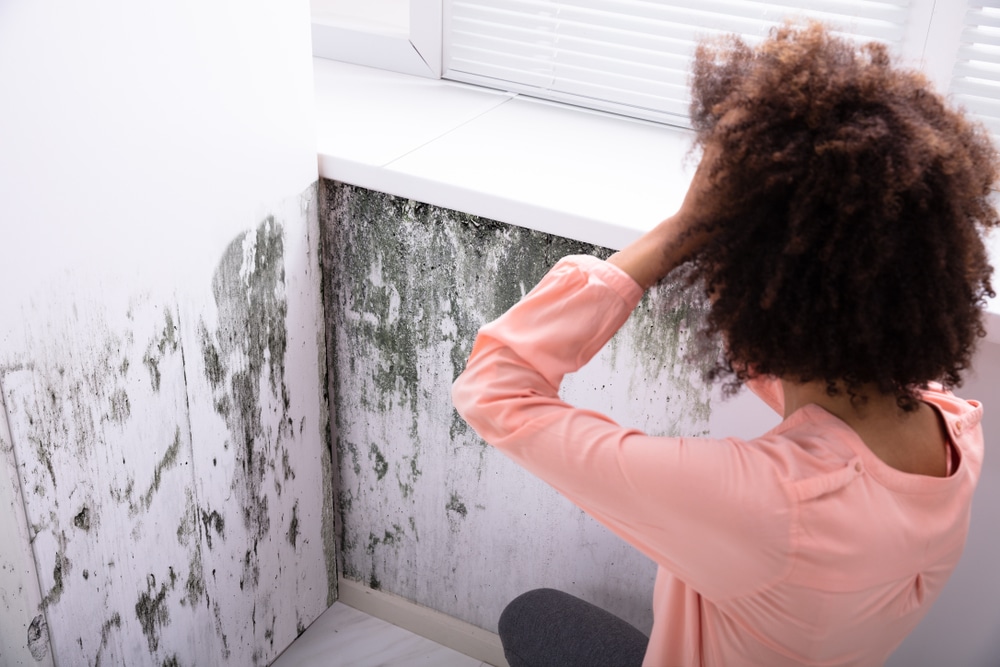
Mould, otherwise known as damp, is a fungus that grows on wet surfaces. Mould comes in a variety of colours: Black, Green, Brown, Grey, and White. It can be difficult to identify mould by colour, as it can occur in many shades. Some of the most common mould strains in the home are:
- Black Mould – Also called Stachybotrys chartarum, Black mould is commonly found in bathrooms and wet rooms but can also occur on cold exterior walls in habitable rooms such as the bedroom or living room.
- Cladosporium – Commonly found in bathrooms, under sinks, and around taps, but it can grow on surfaces like carpets, furniture, walls, and floors.
Mould reproduces from tiny spores. The spores float through the air and deposit on the surfaces. Under adequate temperature, moisture, and nutrient conditions, the spores can form new mould colonies.
How is mould formed in a bedroom?
Mould is formed in a bedroom in a multitude of ways. It can be due to one, or a combination, of the following factors…
- Little to no ventilation.
- A leak from a damaged area of the house, or from pipes.
- Never using the heating system.
- If there is an en-suite, the window is never open after a shower, but the door connection to the bedroom is, which allows humidity to enter the room.
- A build up of humidity when the door is remained closed
- Having more than one person sleeping in the room without ventilation.
Mould can also form much more easily in a bedroom, if it is…
- Small and inhabited, but not ventilated.
- Has unsecure, improperly insulated windows.
- Has a draft coming in directly from outside through unsealed walls.
How to control mould in bedroom
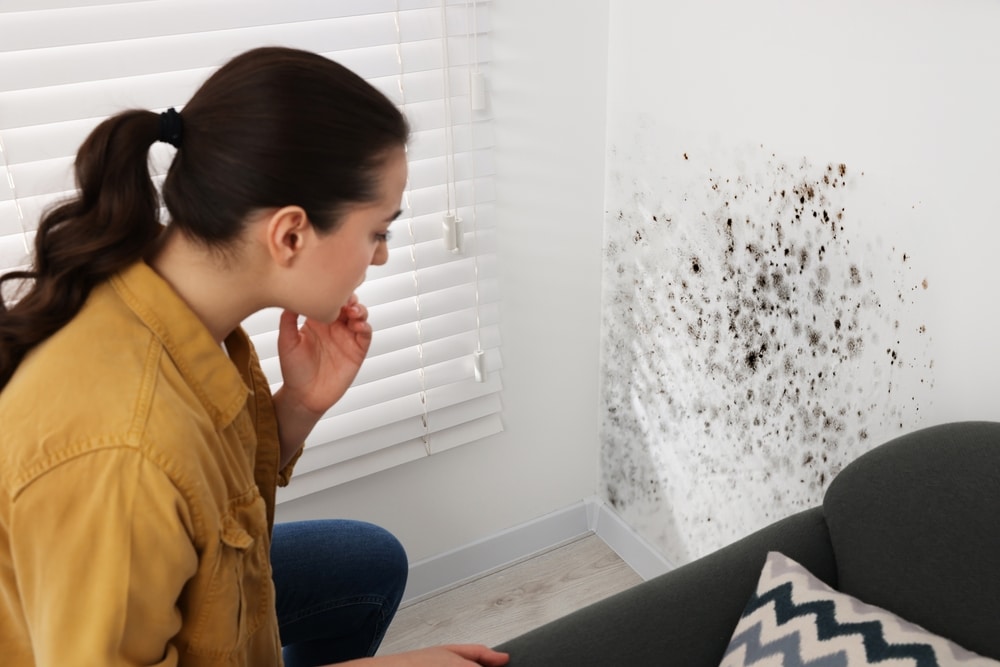
When it comes to controlling mould in a bedroom, the aim is to prevent it from spreading more. You are only left with this option if the mould cannot be removed immediately, as you may be awaiting help to fix the issue.
With that in mind, here are some methods you can apply that will reduce the growth of mould and thereby control it.
- Open a window in your bedroom. Specifically, for at least 20 minutes after you have woken up. Open the bedroom door as well to provide a flow of air. If you spend a lot of time in your bedroom, we would recommend opening it again for another 20 minutes in the evening.
- Don’t use humidifiers or any steam producing appliance. This can contribute to condensation in the room.
- If you have an en-suite, always open the window during and after showering. Close the door to the en-suite as well to prevent the steam from coming into the room.
- Wipe any surfaces that have any condensation. Make sure they are dry after you have wiped them.
- Seal any openings that are causing a draft.
- Replace windows that are not properly insulating the room. You will know this if you feel a draft even if the window is closed.
- Purchase a hygrometer, which will measure the level of moisture in the air in your room. This can help to inform you when a ventilation should be applied.
As you can see, there are a few non-strenuous methods you can do to make the environment of the bedroom the best possible one to prevent further mould growth. We are aware that there are some issues that can’t be fixed instantly, that are causing mould growth in your bedroom. Read on to find out some ways that you can remove them.
How to clean mould from your walls
Cleaning mould from your walls isn’t as simple as a soapy sponge and a quick wipe down, although this may dislodge some mould, it is not a safe or efficient way to remove it. Mould should be removed with cleaners that have antifungal properties, to ensure the mould is killed.
At I-Sells, we sell a whole host of mould control products, alongside anti mould paint. We offer the Kair Mould Control Pack, a bundle with the previously mentioned surface cleaner, and two additional 50ml anti-mould additives, saving you 15% more than if you were to buy individually.
What if mould comes back after cleaning?
If mould returns after you have used anti-mould cleaning products, then the likelihood is that you may have a leak that is providing the perfect environment for mould to grow.
Although fixing the leak will stop further mould from developing, until the wall becomes dry, mould will continue to grow. So in this instance you may need to contact professional mould cleaners who can best advise you on how to proceed.
Using a mould surface cleaner, followed by an anti-mould paint is an extremely effective method in removing mould on a surface, and preventing its return for some time, if the issue that caused it can’t be fixed.
Why is mould an issue in the bedroom?
If you have a sensitivity or allergy to mould, having it in your bedroom presents a major issue, as a big portion of your time is spent sleeping inside it. If you sleep with your bedroom door closed, in addition to your window, humidity will build in the room over time, allowing the mould to grow at a quicker rate.
As it spreads, it will enter your lungs as you breathe, this is where the issues can begin.
Mould is known to cause a range of symptoms that include, but are not limited to…
- Shortness of breath
- Cough
- Runny nose
- Rashes
- Frequent bouts of illness.
- Hair loss
- Tiredness
It can be very easy to construe these symptoms simply due to mould, we recommend you speak with your health professional first. If they can not diagnose you with any issue or condition, then the likelihood is that you’re being affected by mould.
Combat mould in your home today
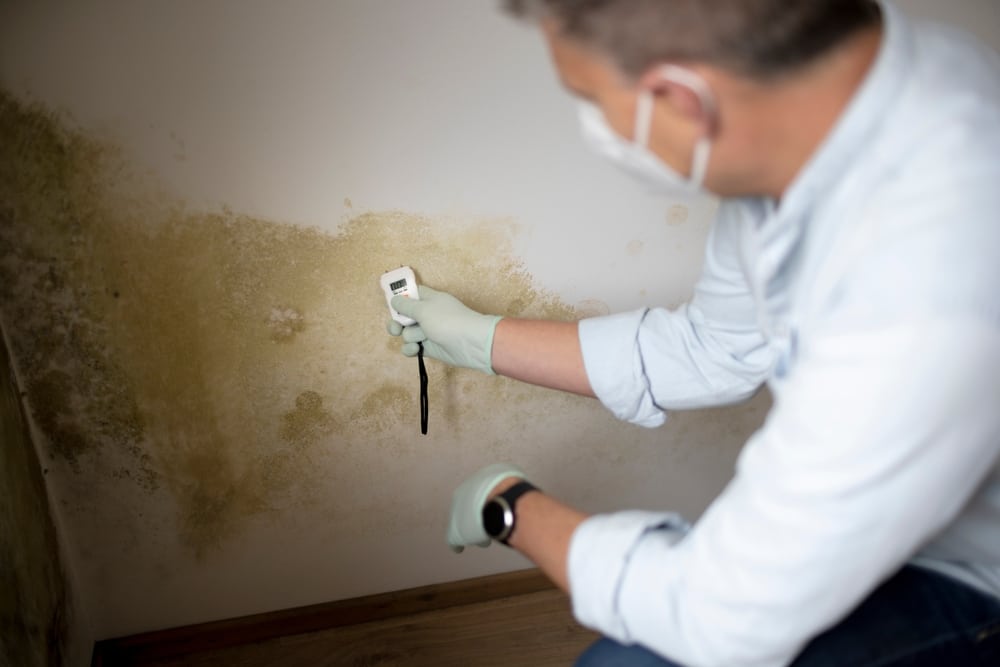
We at I-Sells endeavour to ensure our customers have all the information they require before investing in our mould solutions. Be sure to visit our blog page to learn about the vast array of factors and issues surrounding ventilation, mould, condensation, and much more.
We hope to have shown you how to control mould in the bedroom
We understand you may have more questions, do not hesitate to contact us for more information about whatever you need our help with. If you’d like to email us, click here. For other contact options, see below:
Call us on 020 8463 9696
Visit us at our showroom:
*OPENING TIMES*
Monday – Friday: 8:00 am to 5:30 pm
Saturday: 9:00 am to 12:00 pm
Sunday: Closed
15 St John’s Parade
Sidcup, Kent
DA14 6ES
United Kingdom

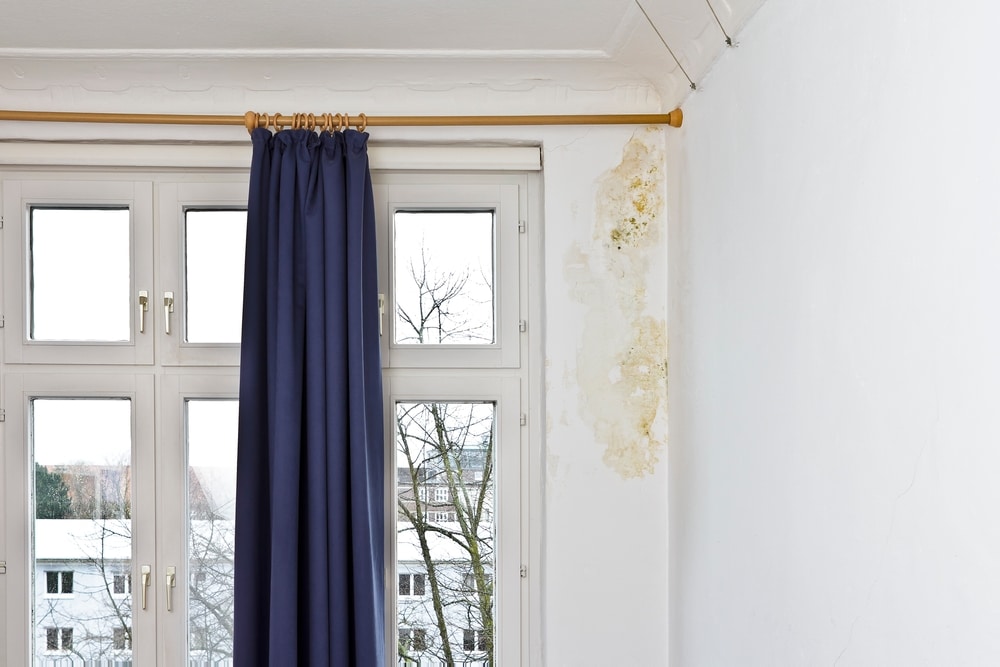
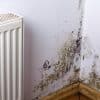



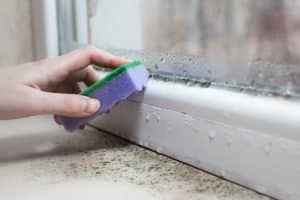




















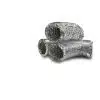

Add comment
You must be logged in to post a comment.